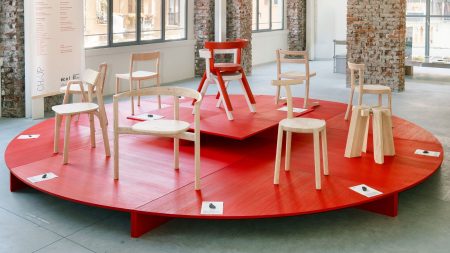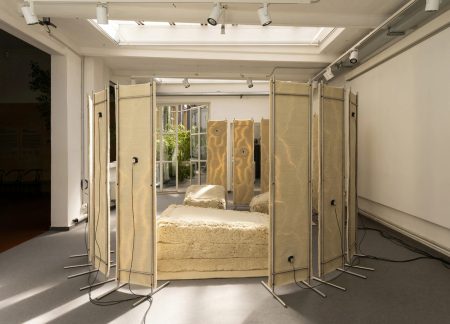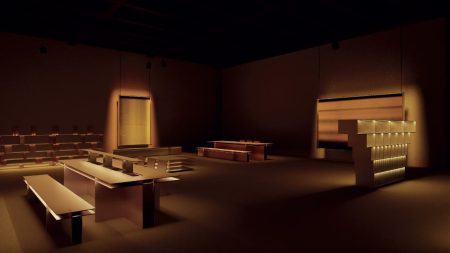Summarize and humanize this content to 2000 words in 6 paragraphs in EnglishFuture Days didn’t begin as a typical event—it started as a question, a spark, a response to the disorientation of our times. Against the backdrop of global instability, founders Uri Casademont and Meri Sahade envisioned a space where imagination, design, and collective agency could come together to shape better tomorrows.This year’s edition centers on the theme of symbiosis—envisioning a future where humanity, technology, and the natural world are not merely connected, but deeply interwoven. From April 30 to May 2, Future Days 2025: Towards Symbiotic Futures will gather over 600 innovators and changemakers from 30 countries at Lisbon’s Estufa Fria. Across these three days, the public is invited to not only rethink the future but to take part in shaping it—through dialogue, experimentation, and collective action.What emerged is a boundary-pushing platform that feels more like a movement than a conference—bridging policy and poetry, systems thinking and sonic experiences. In this conversation, Uri and Meri unpack the origins of Future Days, the values driving their work, and how they’re turning futures thinking into something people can actually feel, build, and dance to.Why and how was Future Days born?Uri Casademont:“In the face of global challenges such as war, pandemics, and climate change, the need to reimagine our collective futures with creativity and optimism has never been more urgent. The true story is that this journey began long before its public launch in September 2023. It emerged from a deep process of exploration and iteration—a quest to find meaning and direction within a “conventional” professional landscape that often felt limiting.Then, on March 2, 2023, the first mention of this project appeared as a beam of light during my morning journaling: “Designing compelling experiences to learn and act, and reconnect with hope.” What followed was an exhilarating adventure—full of learnings, emotional roller coasters, and growth. In just our first year, we attracted government bodies like the European Commission, international stakeholders like PwC Japan, and became official partners of the Istituto Europeo di Design (IED) and Sónar Lisboa!I believe the key to our success lies in the care, depth, and passion we poured into every detail—from the transformative experiences to crafting a language that excites and inspires. Our platform is built on a commitment to (inter)connect people across disciplines and generations, with the ultimate goal of positively shaping the futures we want to live in.”What key principles should guide the balance between humanity, technology, and nature?Meri Sahade:“We’re living in an age where complexity is the norm and crisis is constant. To navigate it, we need systems that are adaptive, regenerative, and deeply collaborative. This conversation is no longer just about sustainability—it’s about symbiosis. Nature offers us the blueprint. It operates through feedback loops, resilience and diversity, yet so many of our dominant systems are still built with forces like extraction, speed, and control. That disconnection—between how we live and how we could live—is what our current objective seeks to address.Following our 2024 edition, we witnessed a shift. What began as a call to democratize futures thinking evolved into something more urgent: a collective realization that interdependence—not isolation—is the way forward. At Future Days 2025, we’re exploring what it means to design for mutual value. What if innovation wasn’t about disruption for the sake of growth, but about long-term relevance, balance, and regeneration? What if success was measured not just by impact, but by how well we nourish life—human and more-than-human?Technology plays a role, but it should support distributed agency and well-being, not just productivity. We ask ourselves: what does it look like to design for mutual flourishing? And what kind of futures might we unlock if we grounded innovation in reciprocity, not just velocity?“How does Future Days make its themes tangible for the general public?Uri Casademont:“Whether it’s due to societal pressures or simply a lack of access to the right tools, long-term thinking can often feel intimidating or out of reach for most people. We don’t believe in keeping the future locked away just in academic papers or exclusive think tanks. It should be something you can touch, question, remix, and even dance to. That’s why our main focus is to turn what might seem complex or unrealistic ideas, accessible and feasible.In order to do so, we put a lot of time and love into democratizing our visual and written language, aiming to get people inspired and excited about the future. By communicating transparently, inviting action, and creating spaces where our audience can experiment, play, and co-create, we strive to make them understand that they are not just witnesses but an active part of this journey.Think of it as “futures-pop”—not just a niche reserved for specialists, but something as catchy and memorable as a great song on the radio: simple enough to understand, deep enough to make an impact, and, ideally, something that gets the world moving.”How do we actively shape the futures we want to live in, and who are the key players?Uri Casademont:“At Future Days, we don’t just talk about futures—we work towards them. A core principle of our curation manifesto is that every gathering and program must lead somewhere: strategic insights, actionable frameworks, or shared roadmaps. Shaping the future starts by grounding ourselves in reality—researching, listening, and staying connected to real-world challenges. That’s why our work begins with local authorities, whether it’s consulting with the Lisbon City Hall, collaborating with the regional government of Catalonia, or gathering global foresight signals from the United Nations.But this shouldn’t stop there. The private sector and academia also play crucial roles in shaping the future. For this reason, we design our gatherings as catalysts—spaces that spark experimentation and foster cross-collaboration between disciplines, sectors, and perspectives.The challenge is that many institutions are stuck—corporations in extractive metrics, public bodies in bureaucratic inertia, and academia in a gap between research and real-world impact. But what we often forget is that these systems are imagined and they exist because we believe in them, so beliefs can shift.Instead of relying solely on structured partnerships, we double down on the infinite potential of human connection. When brilliant creatives, policy-makers, scientists, and entrepreneurs come together, unexpected synergies emerge—sparking the kind of change that no single entity could achieve alone. This is what makes Future Days more than just a series of events—it’s a living, breathing platform designed to unlock new futures through shared presence and bold collaboration.”How does Future Days integrate global diversity?Meri Sahade:“For us, diversity is a design principle. We believe you can’t imagine futures for everyone unless everyone is part of the imagination. From the very beginning, our curatorial framework embraces multiplicity: of geographies, voices, disciplines, and generations.We make a huge effort to include underrepresented regions, intergenerational dialogue, and perspectives that often sit outside the mainstream. This ecosystemic thinking means valuing different kinds of knowledge equally—from foresight to ancestral knowledge, from technology to governance. By putting together this rich mix of perspectives, we create a space where diverse futures are not just imagined but also acted on—by many, for many.”What role does design play in Future Days?Uri Casademont & Meri Sahade:“Design is at the heart of everything we do. From shaping themes and experiences to selecting materials and building spaces, every detail at Future Days is crafted with intention. Our MIRO boards overflow with post-its mapping stories, trends, and ideas. But for us, design goes beyond visuals or functionality—it’s about creating interactions, narratives, and ecosystems that invite people to engage with futures in a living, participatory way.We believe in Futures with and by Design—where critical design, distributed thinking, and creative foresight come together to set us apart from conventional gatherings. This approach lets us bridge the speculative and the practical: envisioning what’s next, while staying rooted in what’s been overlooked. Future Days encourages us to be creative and to have hope about the futures we want to live in.”









